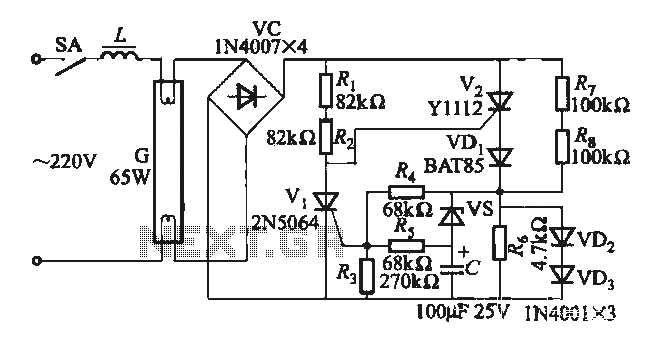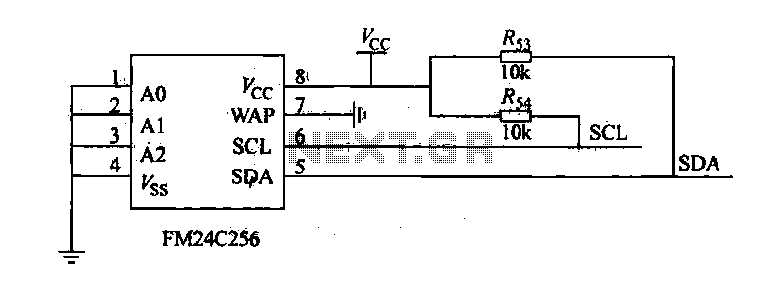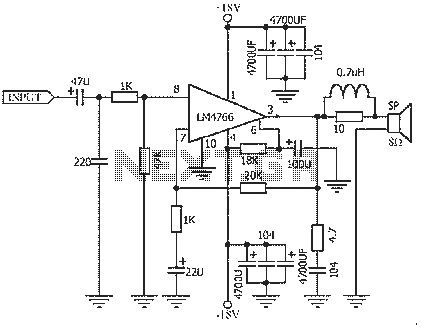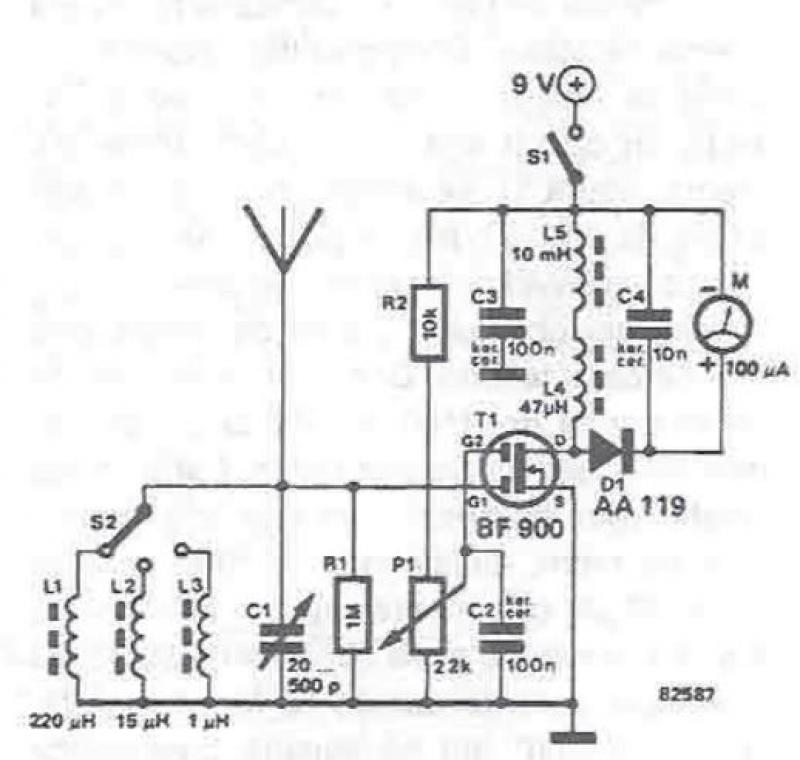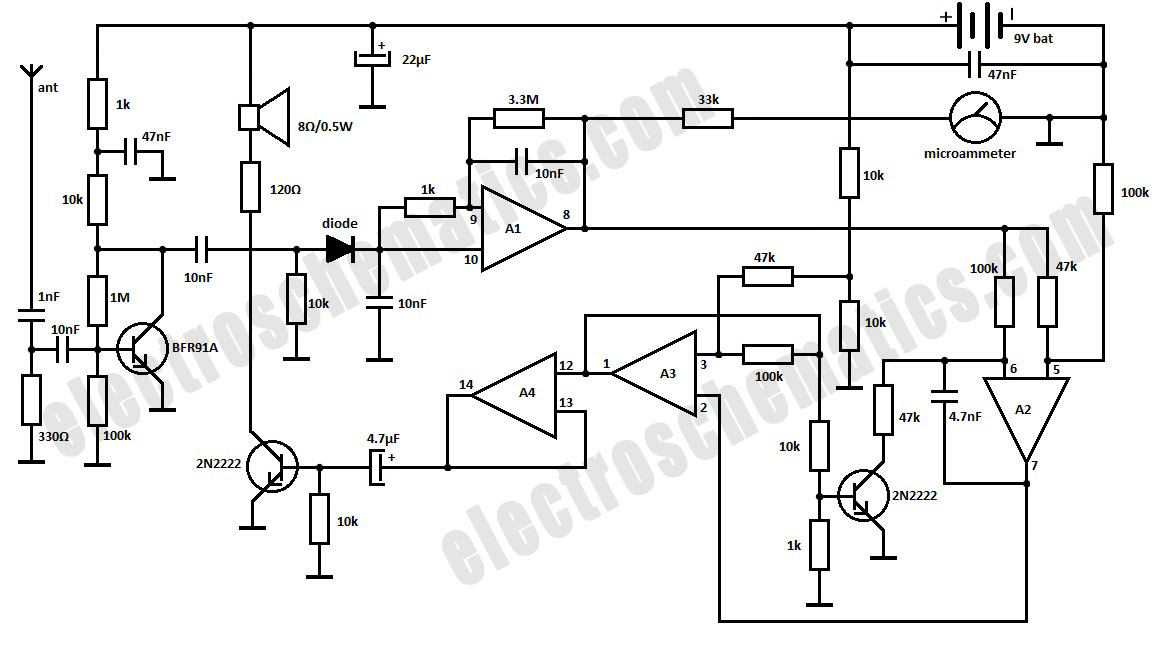
The DTMF wireless calling system circuit
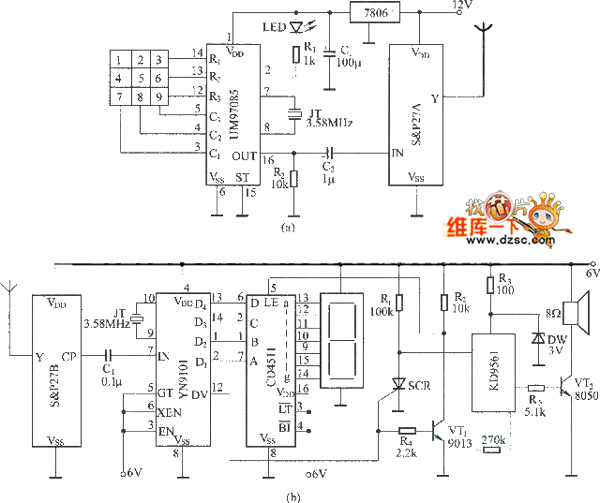
The circuit utilizes a dual sound multi-frequency encoding signal to modulate the emitted carrier frequency, forming a DTMF encoding wireless calling system. It incorporates the DTMF encoding circuit UM97085 and the decoding circuit YN9101 to create a micro wireless calling system suitable for small enterprises, providing a convenient and economical solution.
The described DTMF (Dual-Tone Multi-Frequency) encoding wireless calling system is designed to facilitate communication in small business environments. The core components include the UM97085 DTMF encoder, which generates specific frequency pairs corresponding to the pressed keys on a telephone keypad. This encoder is crucial for transforming the input signals into a format suitable for wireless transmission.
The YN9101 DTMF decoder serves as the counterpart to the encoder, receiving the modulated signals and converting them back into recognizable commands or data. This two-way communication ensures that the system can effectively transmit and receive information, making it ideal for applications such as paging systems, remote control operations, or simple intercom systems.
The circuit operates by modulating the carrier frequency with the DTMF signal, which allows for efficient transmission over radio frequencies. The design emphasizes low power consumption and compactness, making it particularly advantageous for small enterprises that may have limited resources or space.
In terms of implementation, the system requires a power supply compatible with the operating voltage of the UM97085 and YN9101 circuits. Additional components may include antennas for signal transmission and reception, capacitors for smoothing power supply fluctuations, and resistors for biasing and signal conditioning.
Overall, this DTMF encoding wireless calling system presents a reliable and cost-effective solution for enhancing communication capabilities in small business settings. Its straightforward design and use of widely available components contribute to its practicality and ease of deployment.By the dual sound multi-frequency encoding signal, the circuit modulates the emitted carrier frequency, and it composes a DTMF encoding wireless calling system circuit. The circuit uses DTMF encoding circuit UM97085 and decoding circuit YN9101 to form a micro wireless calling system, which is used in small enterprises, and it is convenient and economic.
See.. 🔗 External reference
The described DTMF (Dual-Tone Multi-Frequency) encoding wireless calling system is designed to facilitate communication in small business environments. The core components include the UM97085 DTMF encoder, which generates specific frequency pairs corresponding to the pressed keys on a telephone keypad. This encoder is crucial for transforming the input signals into a format suitable for wireless transmission.
The YN9101 DTMF decoder serves as the counterpart to the encoder, receiving the modulated signals and converting them back into recognizable commands or data. This two-way communication ensures that the system can effectively transmit and receive information, making it ideal for applications such as paging systems, remote control operations, or simple intercom systems.
The circuit operates by modulating the carrier frequency with the DTMF signal, which allows for efficient transmission over radio frequencies. The design emphasizes low power consumption and compactness, making it particularly advantageous for small enterprises that may have limited resources or space.
In terms of implementation, the system requires a power supply compatible with the operating voltage of the UM97085 and YN9101 circuits. Additional components may include antennas for signal transmission and reception, capacitors for smoothing power supply fluctuations, and resistors for biasing and signal conditioning.
Overall, this DTMF encoding wireless calling system presents a reliable and cost-effective solution for enhancing communication capabilities in small business settings. Its straightforward design and use of widely available components contribute to its practicality and ease of deployment.By the dual sound multi-frequency encoding signal, the circuit modulates the emitted carrier frequency, and it composes a DTMF encoding wireless calling system circuit. The circuit uses DTMF encoding circuit UM97085 and decoding circuit YN9101 to form a micro wireless calling system, which is used in small enterprises, and it is convenient and economic.
See.. 🔗 External reference
